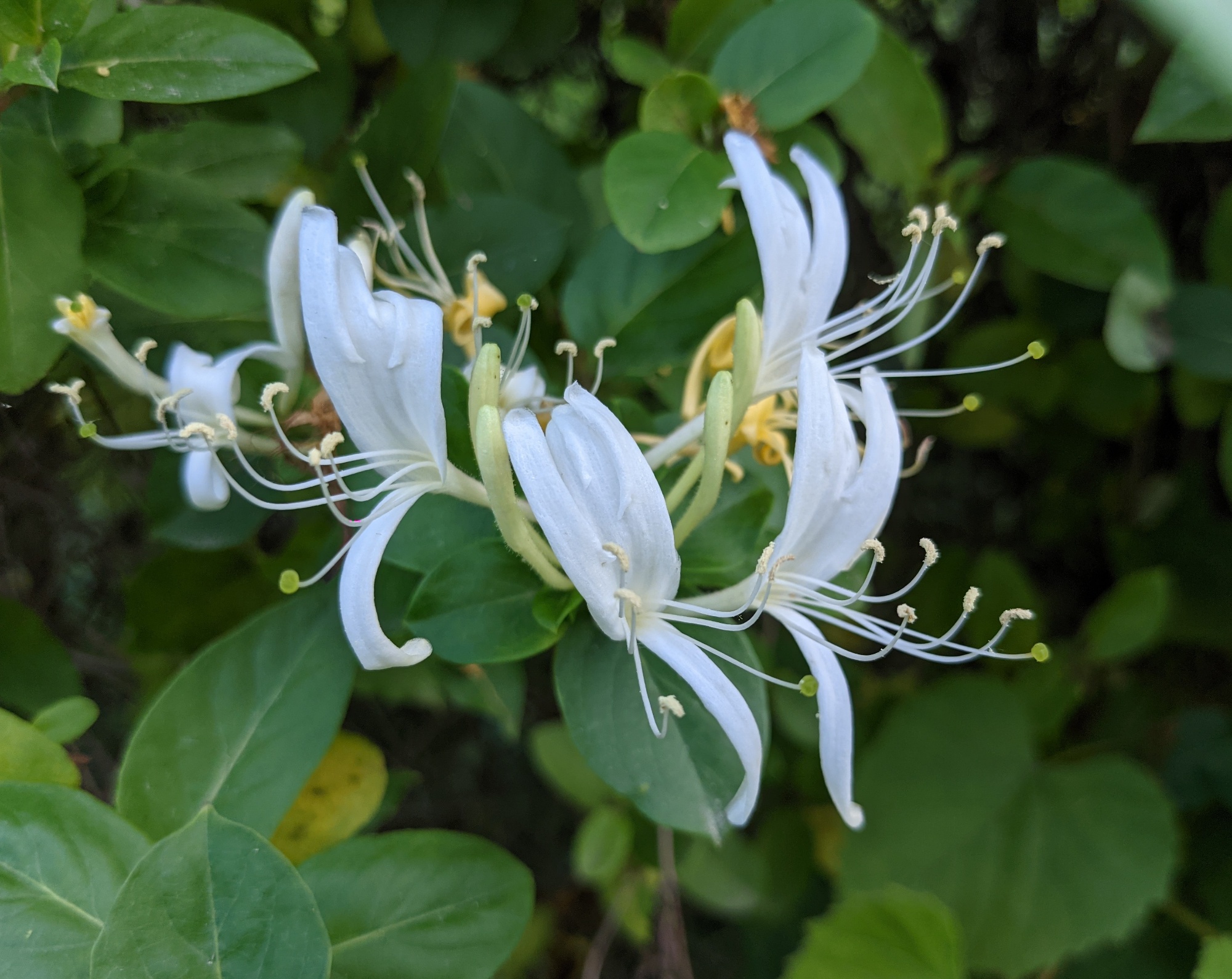
It was a hot and humid day. The honeysuckle perfumed the muggy air with its seductive fragrance. I ventured out, dressed from head to toe (for sun and tick protection), to harvest honeysuckle blooms, many of which seemed to be intertwined with brambles. Soon, my nitrile gloves were ripped to shreds – but, sometimes, sacrifices must be made in the pursuit of the land’s wild bounty.
I’ll admit that my walk around the farm wasn’t purely focused on gathering honeysuckle blooms – I also enjoyed seeing what kinds of new trees were growing, cataloguing where berries would be ripening, and observing insect life. I was especially intrigued by the pollinators, drawn by the honeysuckle’s siren call.
As I watched the bees, I noticed that they seemed unusually calm…even a bit drowsy? A honeybee visited a few honeysuckle blooms, but spent an inordinate amount of time just hanging around the bloom. The bee seemed less businesslike than most.

A wood (carpenter) bee was also visiting the honeysuckle. They’re the jumbo jets of the bee world, like an enormous bumblebee.
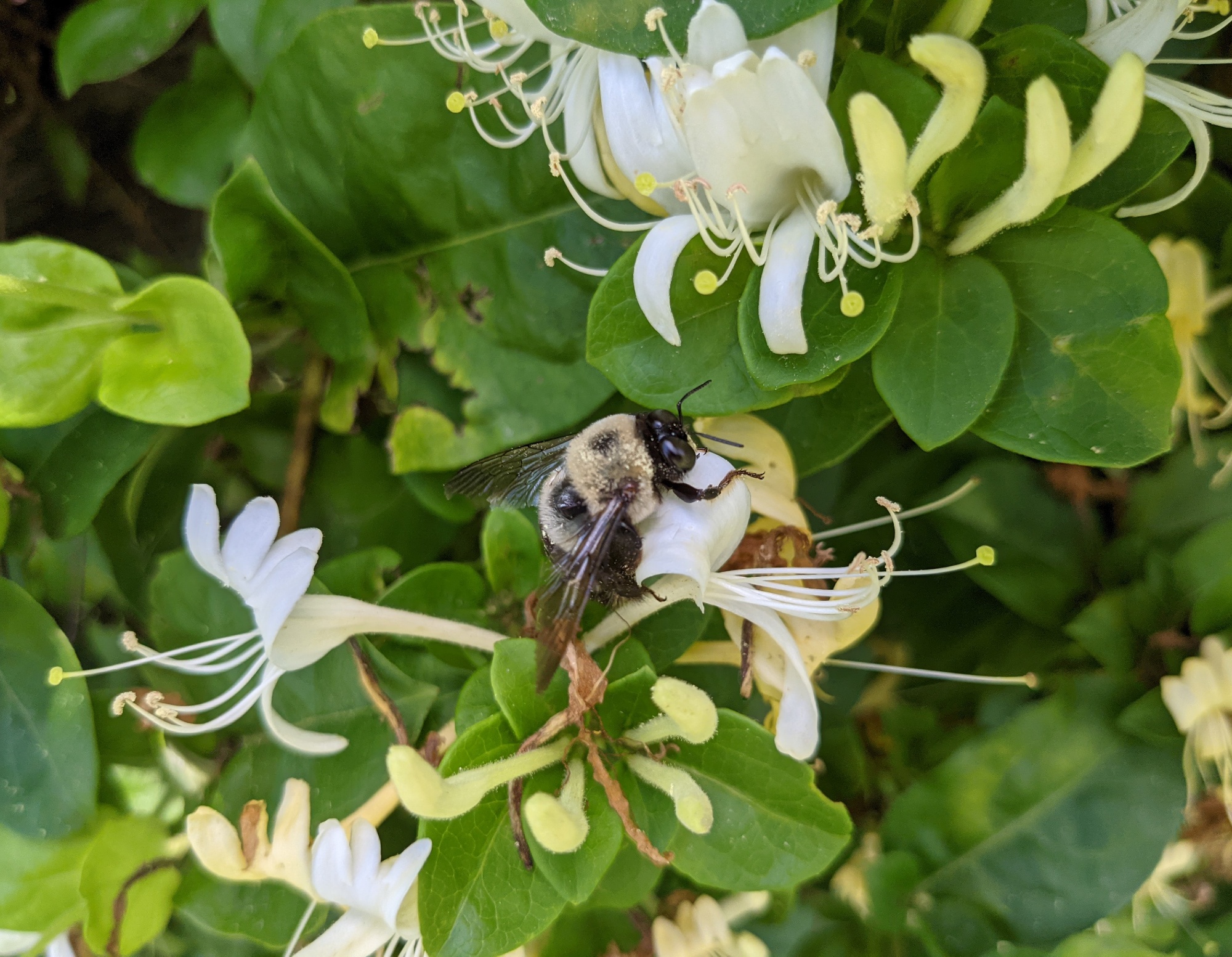
The wood bee was covered in pollen, including on its head, and it bumbled clumsily around the blooms. The bee even fell off the flowers onto the shrubbery below. Could it be drunk?
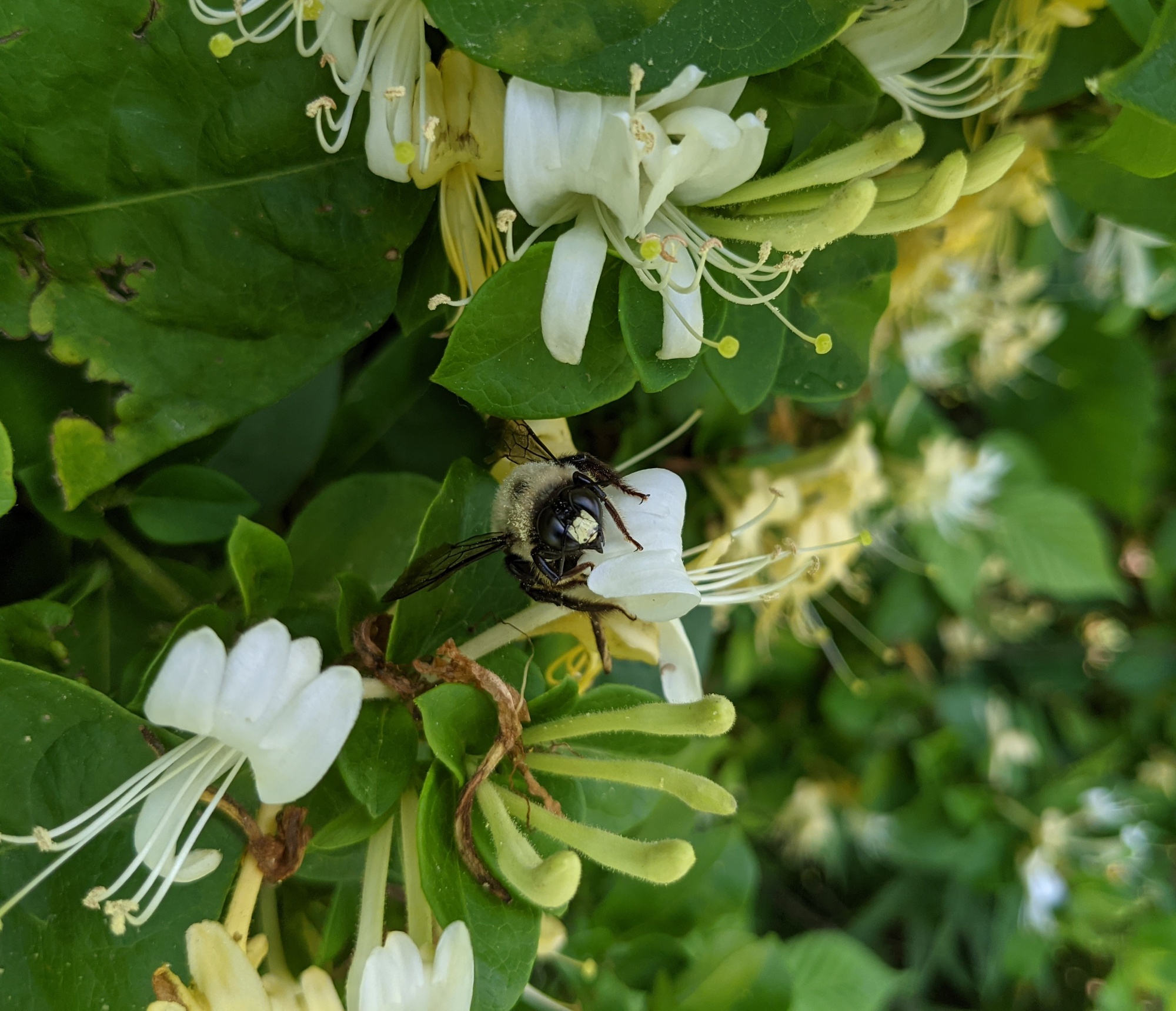
As I researched the possibility of bee inebriation, it became clear that it was definitely possible. The conditions necessary for the honeysuckle nectar to ferment were present, per the link above: recent rainfall and high humidity may have diluted the nectar’s high sugar content, allowing natural yeasts to proliferate and causing fermentation.
I also noticed that the first bee that was acting strangely was also going to older, darker blooms, which I wouldn’t have expected to be as attractive as the newer, bright white blooms…but now it makes sense if the bee was after a tipple! I hope that the bees who had – intentionally or not – imbibed fermented nectar made it home safely and slept it off.
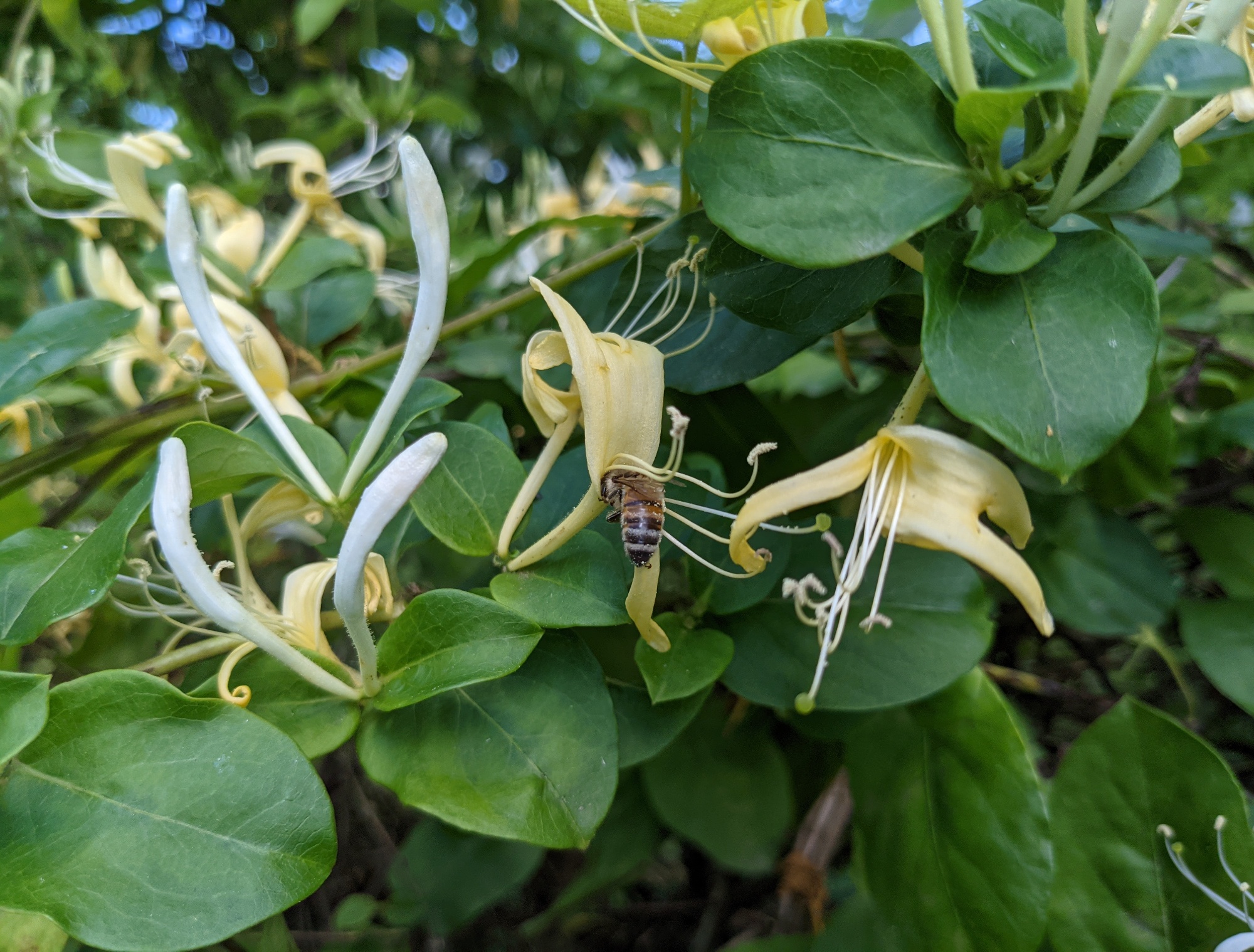
But back to the wine – if you’re interested in how it’s made, check out my earlier post. Full disclosure, though: it takes some effort to make this particular, very special, wine, and the labor-intensive part occurs right at the start. In fact, the picking of the small flowers is painstaking and the trimming of the sepal – from each and every bloom – is very time-consuming. Tip: snip off the sepals with kitchen shears – it makes the job go much more quickly. But if you’re willing to put in the work, the reward is an intense sensory experience.
Without a doubt, this one of the most delightful wildcrafted wines I make, and arguably the best representative of the potential of floral wines: the perfume of the flowers is well-captured in the finished wine, and drinking it is a truly exceptional experience.
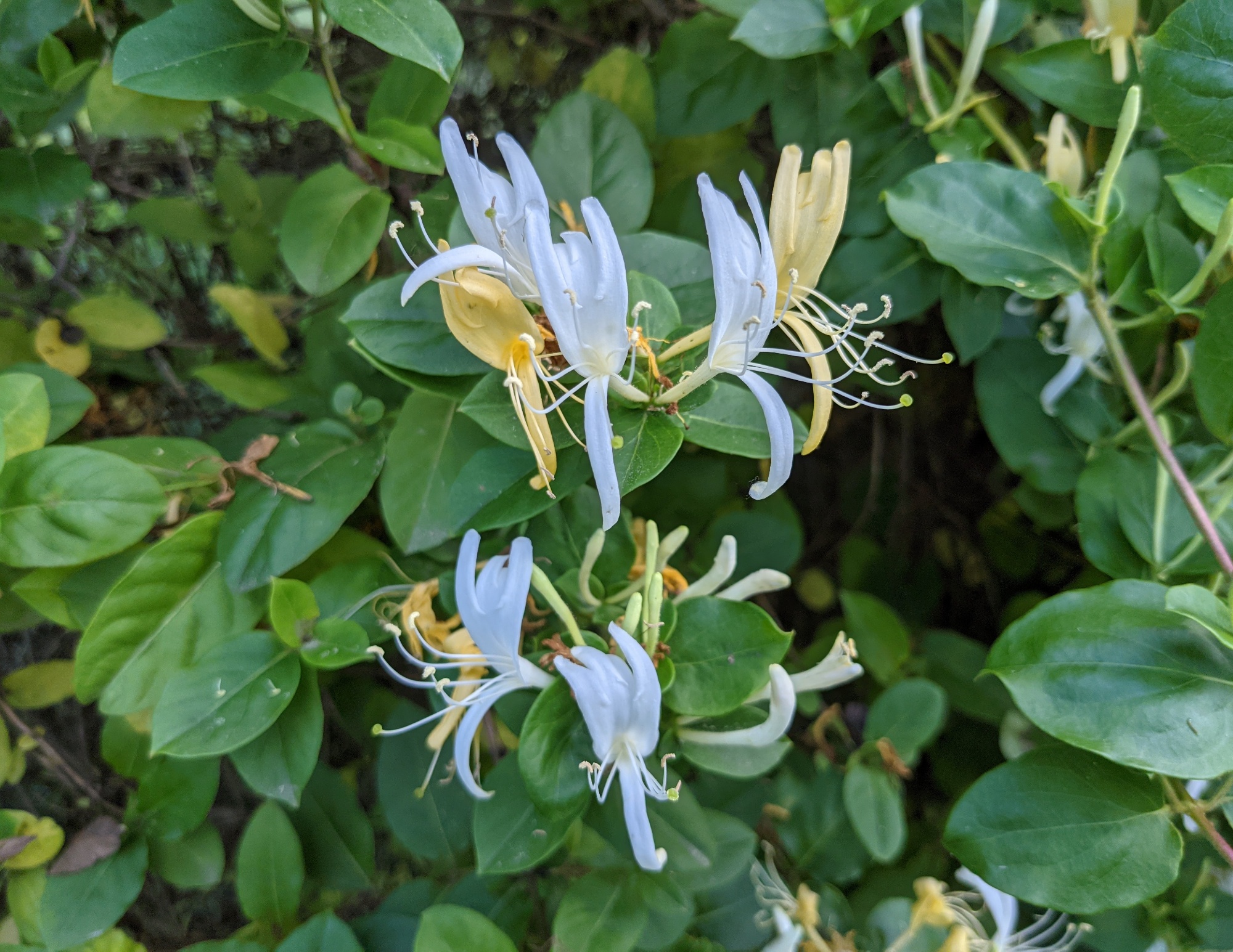
A handcrafted wine that takes this much effort really makes you appreciate the finished product that much more. I look forward to the day when the wine is ready, and when I take the first sip of the clear, fragrant elixir, I’ll be transported back to the heat of summer, the incomparably wonderful smell of the flowers, and the drunken bees.
